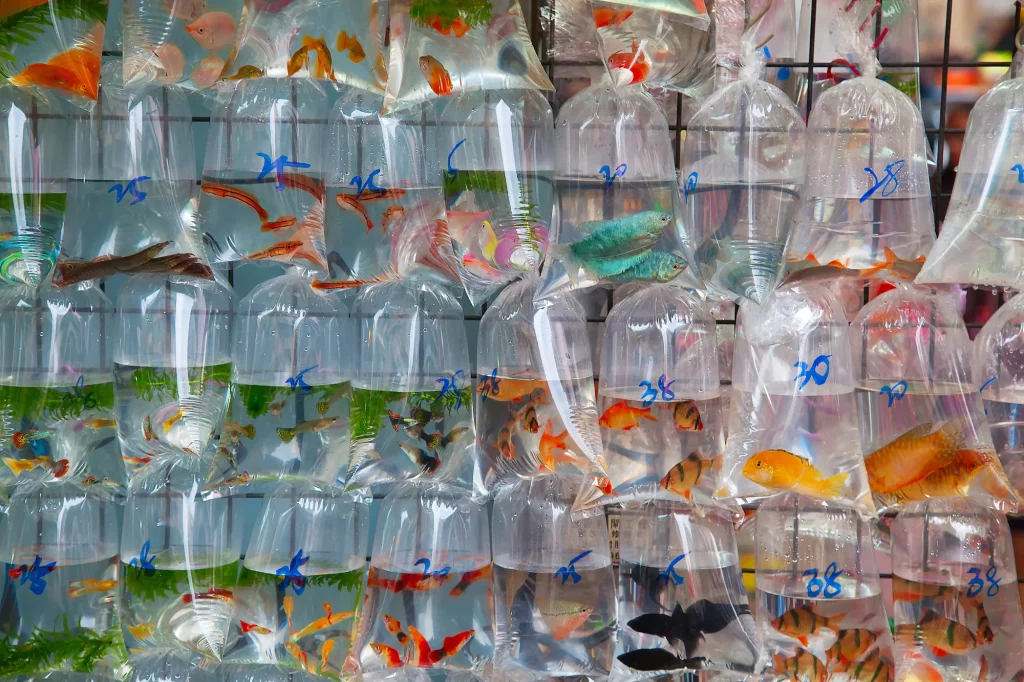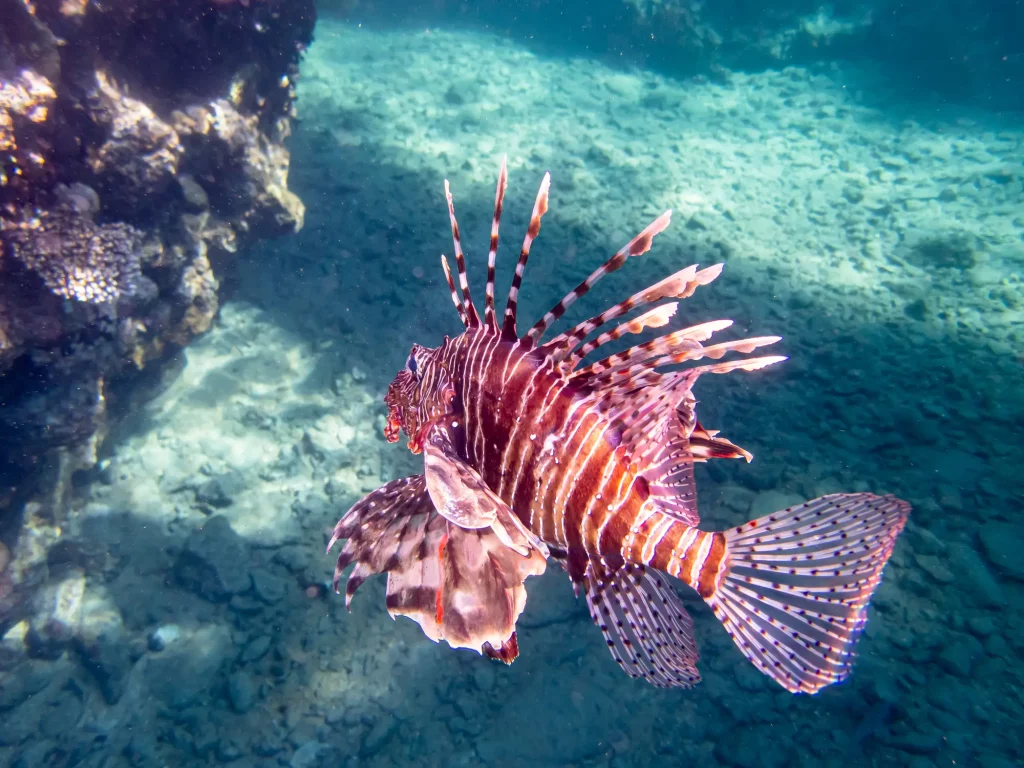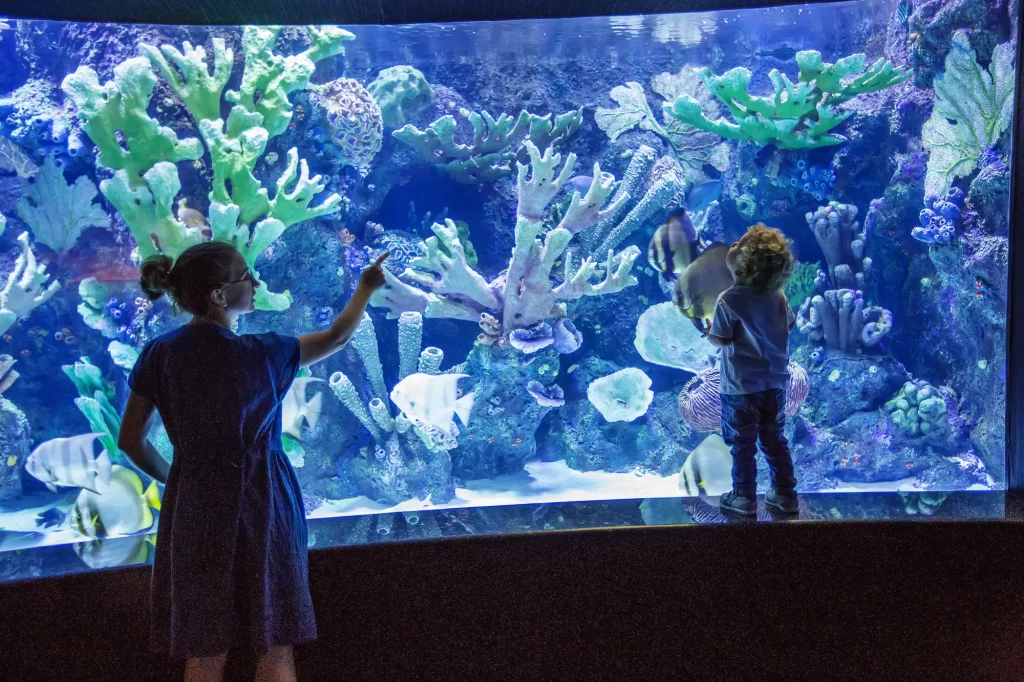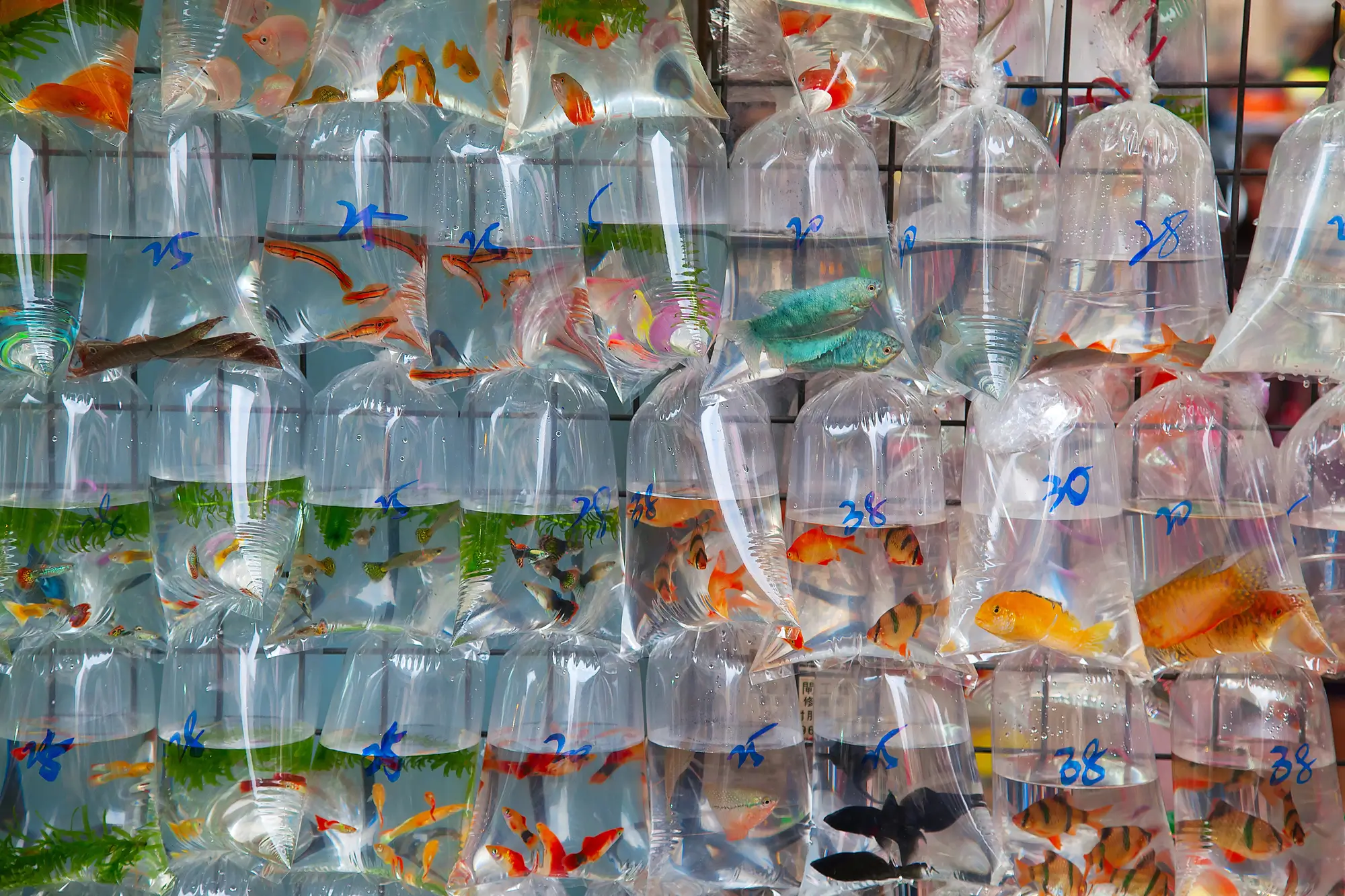
Have you ever considered creating an aquarium or reef tank? They have become more and more popular, due to their aesthetic appeal and their therapeutic benefits.
Unfortunately, the aquarium trade also poses some negative environmental consequences. These can include:
- The over-harvesting of wild species, leading to ecological imbalances.
- Habitat destruction due to unsustainable fishing methods.
- The spread of invasive species.
- Diseases spreading
The Environmental Impact of Collection Practices
The majority of tropical fish sold in aquarium shops are collected in their natural habitat. Unregulated collection of wild marine species for aquariums can lead to a significant decline in the targeted fish species. An example of this is cyanide fishing, where a toxic liquid made of sodium cyanide is squirted into the prey’s face to stun them.
This is an unsustainable method of fishing that harms the target species, the coral reef and other fish in the surrounding area.
Additionally, the aquarium trade not only targets wild fish species, but also wild coral colonies. This poses a significant risk to the health of coral reefs as it decreases the resilience of the ecosystem as a whole by removing key species and causing habitat destruction.
Ecological Consequences Beyond Collection
When non-native species are introduced into an environment, intentionally or accidentally, they may disrupt the balance of existing wild populations, or worse, become invasive, causing negative ecological impacts.
An example of this is in the case of the lionfish. In the 1980s, lionfish were introduced to waters of the Northwest United States, where they had no natural predators.
With their striking, fan-like fins, lionfish are visually appealing and became popular among hobby aquarists. However, they will eat smaller fish species in a tank, such as clownfish and gobies. It is believed that the release of lionfish from home aquariums into the wild initiated their spread in these waters.
As a result, their population began to grow rapidly. This created an imbalance in the existing food web because lionfish share the same prey as snappers and groupers, which are also economically and ecologically significant species. The presence of lionfish could also lead to negative impacts on recreational and commercial fisheries if left unchecked, as they would compete with other predators for the limited prey available.
Lionfish mainly consume herbivorous fish, and adding another predator to the food chain can lead to a severe decrease in the overall population of herbivores. This decrease can then cause an uncontrolled growth of algae, and as a result, algal overgrowth can negatively affect coral reefs as it blocks out essential UV rays necessary for healthy coral growth.
The introduction of just one non-native species into an environment without planning and control already has detrimental impacts on the balance of the natural ecosystem.

Disease and Pathogen Spread
The selling and transportation of live animals without proper disease prevention procedures in place can lead to an uncontrolled spread of diseases. Aquarium fish can carry foreign harmful bacteria, viruses, fungi, and parasites. When these are introduced into new environments, they may cause diseases that can lead to mass mortalities among native species that aren’t readily resilient. This can disrupt ecological balance, reduce biodiversity, and even lead to extinctions in some extreme cases.
These agents can also potentially pose a significant risk to human health, as they might have zoonotic features, meaning they can be transmitted from animals to humans.
Therefore, it is crucial to implement proper disease prevention measures and to exercise caution within the aquarium trade in order to ensure that both animals and humans are protected from potential health risks.

Mitigating Negative Impacts
Sustainable collection methods, regulated trade, and responsible consumer behavior are significant practices in mitigating the negative impacts caused by the aquarium trade.
Methods such as captive breeding programs are a sustainable alternative to obtaining aquarium fish directly from the wild as it minimizes the threats to existing natural populations. Furthermore, the use of synthetic coral and aquarium composition material is also a sustainable practice for similar reasons.
The aquarium trade can also become more regulated by utilizing sustainable technologies like biosecurity measures and digital supply chains. These innovations can help prevent the spread of diseases, and help ensure animal welfare by improving traceability and transparency within the trade.
Being a responsible consumer in the aquarium trade and mitigating the negative impacts of the industry means sourcing marine species with minimal environmental impact, avoiding releasing fish in the wrong places, monitoring species health, and promoting sustainability and increased regulation within the trade.
The Role of Policy and Education
Currently, some regulations are in place that aim to promote sustainability, prevent illegal activities, and also ensure the ethical welfare of different marine species. These include policies concerning what species can or cannot be traded, in what quantities, and in what specific conditions. There are also regulations in place that specify quarantine protocols, health inspections, and rules surrounding captive breeding.
Specific regulations may differ between countries and regions throughout the world, in addition to their level of enforcement. This is why there are ongoing efforts that aim to strengthen regulations, locally and globally, improve compliance with policies, and promote sustainable practices and awareness through education about the aquarium trade. Hopefully, these efforts can ultimately lead to responsible choices that contribute to the planet’s environmental sustainability.
Conclusion
There are several aspects of the aquarium trade that are not entirely environmentally safe or sustainable. Taking species from the wild is a delicate process, and so policies and regulations must be enforced globally.
Through continued educational efforts promoting responsible choices, the aquarium trade can become safer, more ethical, and more sustainable.
For more information, consult these resources on the marine aquarium trade and the most traded marine aquarium fish.
FAQ corner:
How are coral reefs affected by the endangered species trade?
Coral reefs are primarily affected by unsustainable collection methods that can lead to habitat destruction (cyanide fishing, dynamite fishing, and bottom trawling).
How does aquaculture affect coral reefs?
CAquaculture can help with nutrient cycling between coral reefs and different marine ecosystems, but it can also harm coral reefs by destroying them for infrastructure, causing excessive nutrient enrichment, and altering trophic dynamics that can affect overall coral growth.
How does fisheries affect coral reefs?
Unsustainable fishing practices like bottom trawling and dynamite fishing can physically harm coral reefs and cause loss of habitat for fish species. Additionally, overfishing due to poor fisheries management can also disrupt the ecological balance and health of reefs.
